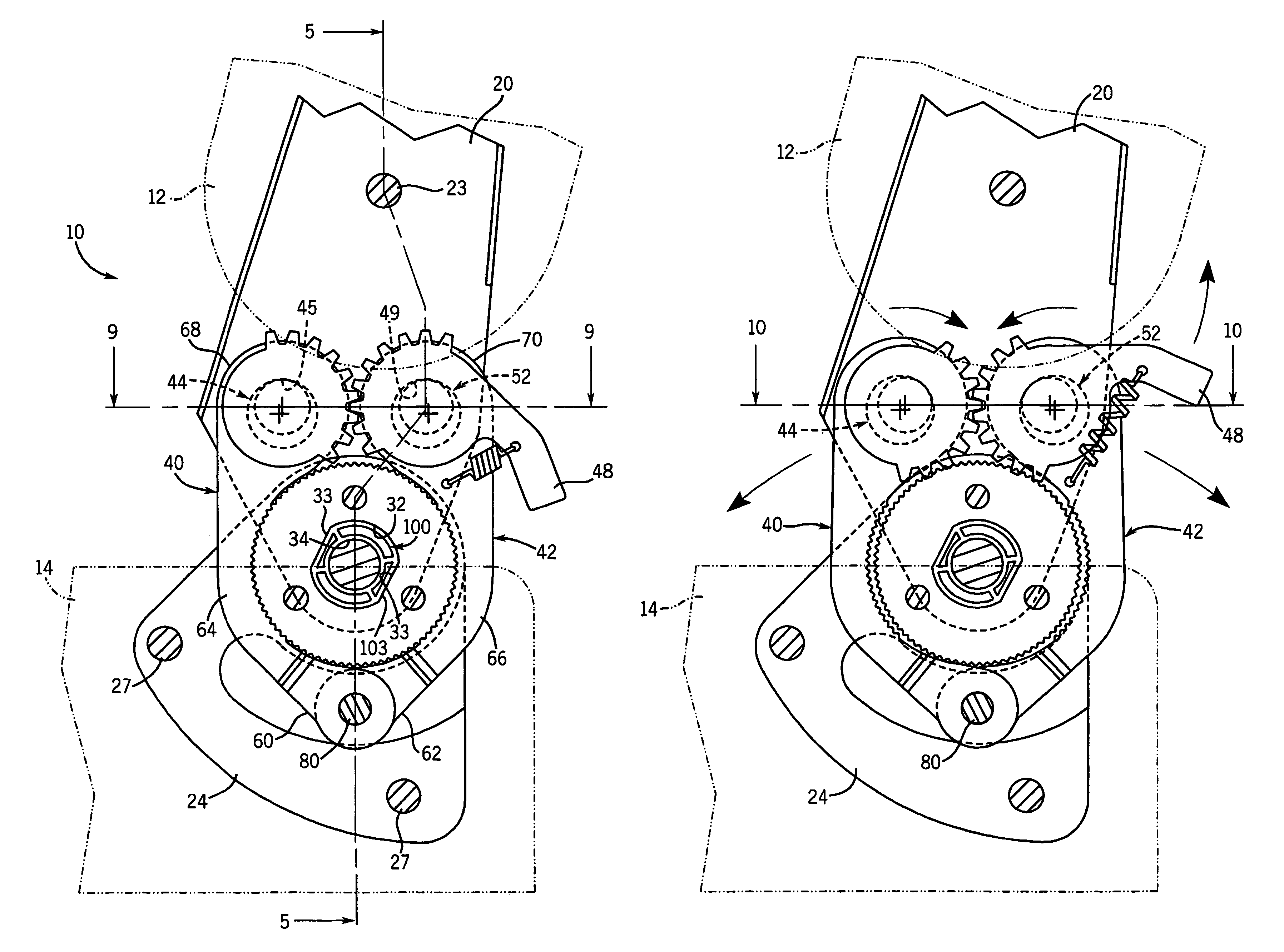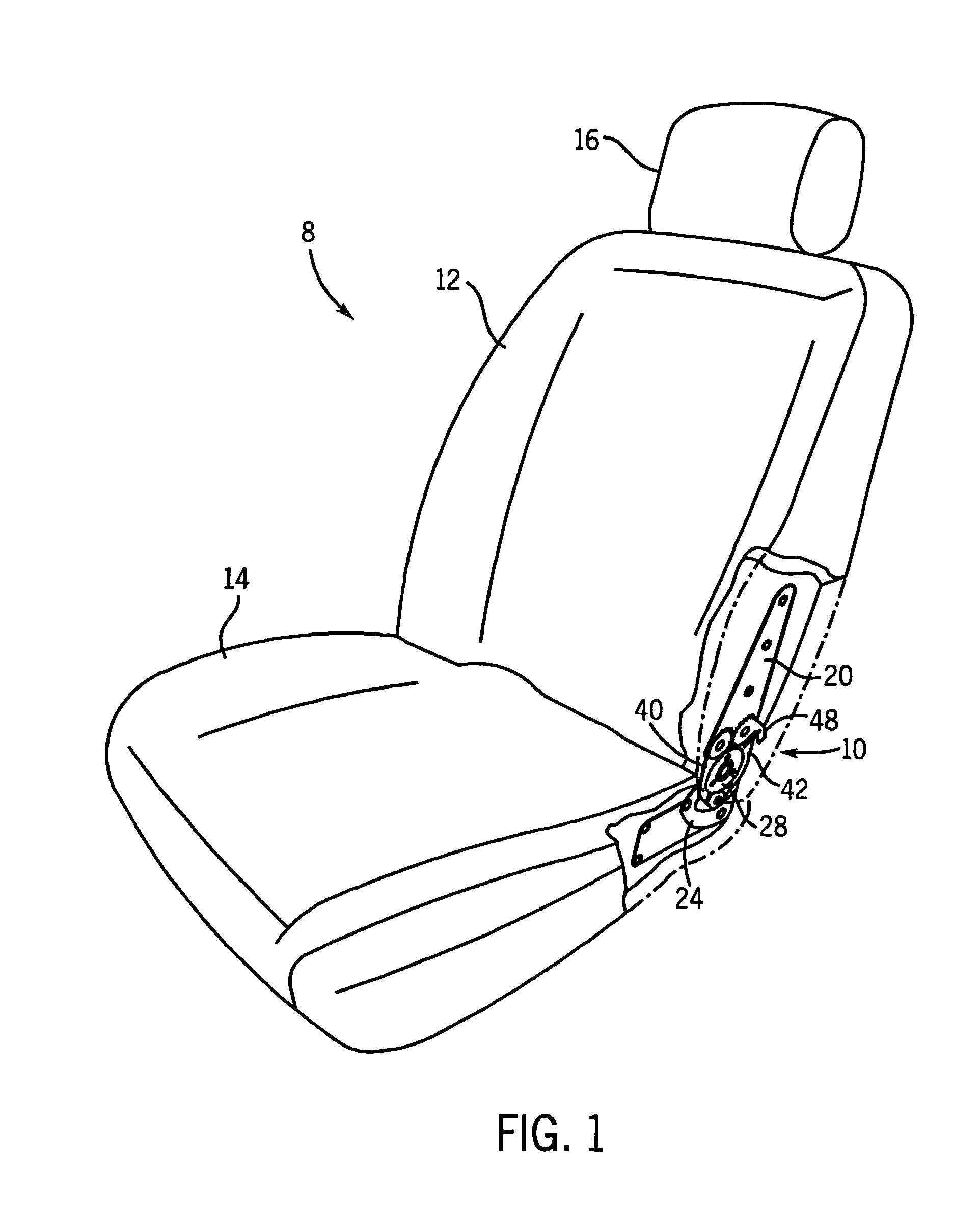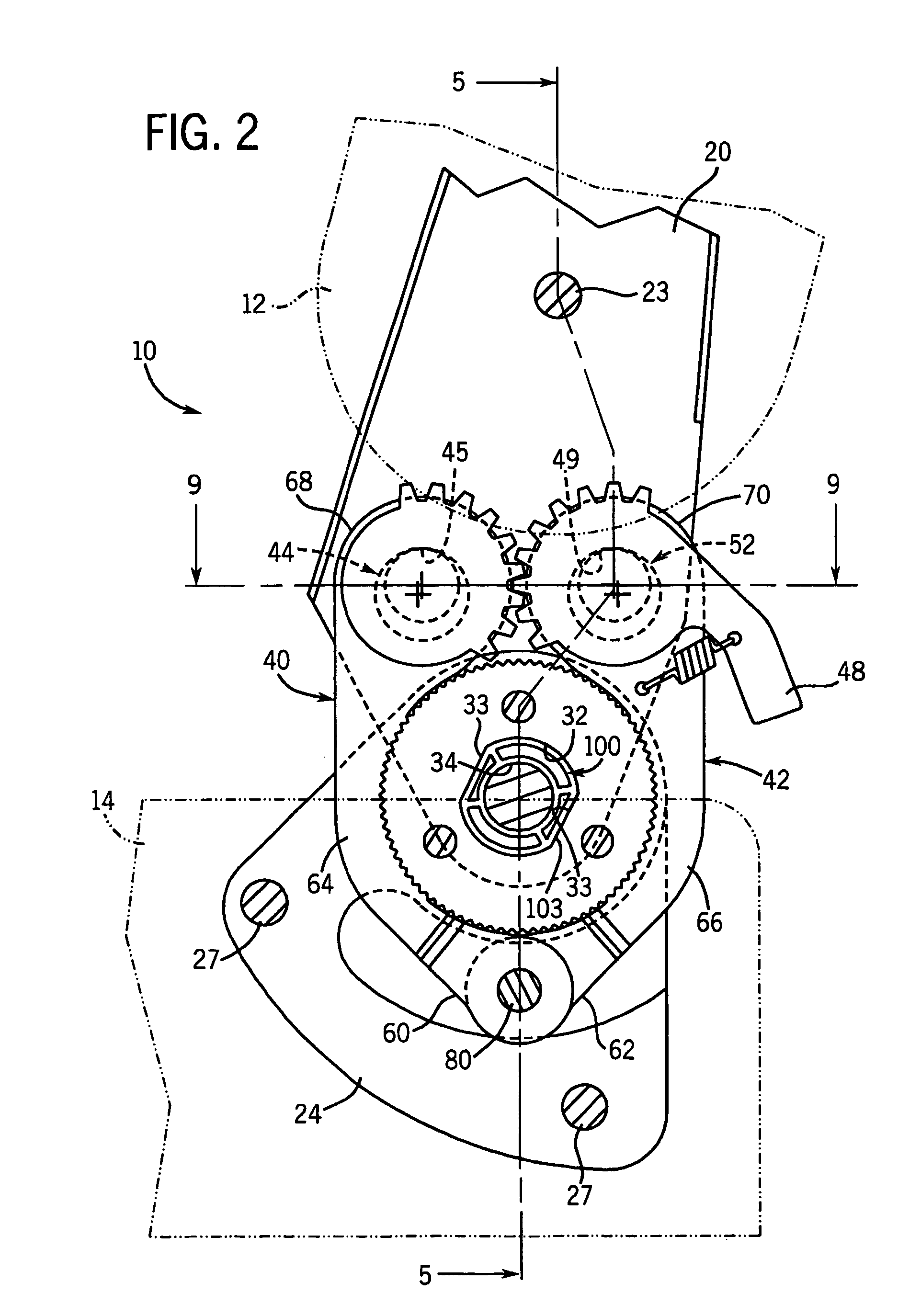Recliner mechanism
a technology of reclining mechanism and seat, which is applied in the direction of movable seats, vehicle components, vehicle arrangements, etc., can solve the problems of less durable components, higher manufacturing and assembly costs, and large size, and achieve the effect of improving and robust high strength design
- Summary
- Abstract
- Description
- Claims
- Application Information
AI Technical Summary
Benefits of technology
Problems solved by technology
Method used
Image
Examples
Embodiment Construction
[0030]Referring generally to FIGS. 1-6 and in particular to FIGS. 1-4, there is shown a vehicle seat 8 having a section cut away in FIG. 1 to show a recliner mechanism 10. The seat 8 includes a seat back 12 and a seat base 14 of any appropriate or conventional design and general construction. The seat back 12 includes a first seat back frame or member 20 and a second seat back frame or member 22 (see FIG. 5). The first and second seat back members 20 and 22, respectively, are formed to create a space 21 there between to receive at least a portion of the recliner mechanism 10. The first and second seat back members 20 and 22, respectively, are connected using any known or appropriate coupling device such as a bolt 23. The first and second seat back members 20 and 22, respectively, are made from any known or appropriate material as is known in the industry of designing recliner mechanisms and preferably from a metal such as steel or a steel alloy. The seat back has other standard or k...
PUM
 Login to View More
Login to View More Abstract
Description
Claims
Application Information
 Login to View More
Login to View More - R&D
- Intellectual Property
- Life Sciences
- Materials
- Tech Scout
- Unparalleled Data Quality
- Higher Quality Content
- 60% Fewer Hallucinations
Browse by: Latest US Patents, China's latest patents, Technical Efficacy Thesaurus, Application Domain, Technology Topic, Popular Technical Reports.
© 2025 PatSnap. All rights reserved.Legal|Privacy policy|Modern Slavery Act Transparency Statement|Sitemap|About US| Contact US: help@patsnap.com



